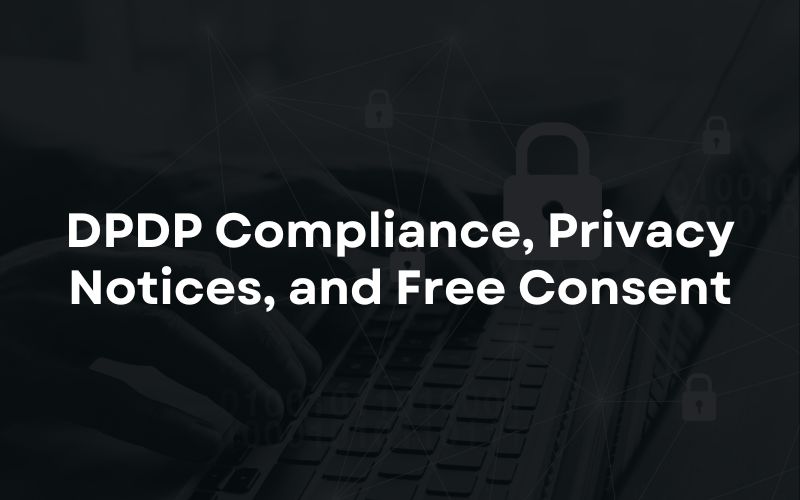Introduction
In the realm of data protection and privacy, compliance with legal and regulatory frameworks is essential. The Digital Personal Data Protection (DPDP) compliance outlines guidelines for handling personal data responsibly, ensuring privacy notices are clear and obtaining free and informed consent from data subjects.
DPDP Compliance
Digital Personal Data Protection (DPDP) compliance refers to adhering to the legal requirements and standards set forth in legislation aimed at protecting personal data. The key aspects of DPDP compliance include:
1. Data Collection: Personal data should be collected only for specified, explicit, and legitimate purposes.
2. Data Processing: Data should be processed lawfully, fairly, and in a transparent manner.
3. Data Minimization: Only the data necessary for the purposes stated should be collected and processed.
4. Accuracy: Ensuring that personal data is accurate and kept up to date.
5. Storage Limitation: Data should be retained only as long as necessary for the purposes for which it was collected.
6. Integrity and Confidentiality: Data should be processed in a manner that ensures appropriate security, including protection against unauthorized or unlawful processing and against accidental loss, destruction, or damage.
Privacy Notices
Privacy notices are critical in ensuring transparency and building trust with data subjects. A privacy notice should:
1. Be Clear and Concise: Use plain language to explain how personal data is collected, used, stored, and shared.
2. Cover Key Information: Include details such as the identity and contact details of the data controller, purposes of processing, legal basis for processing, data retention periods, and the rights of data subjects.
3. Be Easily Accessible: Ensure that the privacy notice is easily accessible to data subjects at the point of data collection and throughout the data lifecycle.
4. Include Contact Information: Provide contact details for the data protection officer or relevant contact person for privacy-related inquiries.
Free Consent
Free consent is a cornerstone of data protection laws and requires that consent from data subjects must be:
1. Freely Given: The individual must have a real choice, and there should be no coercion or undue influence.
2. Specific: Consent should be specific to the purpose for which data is collected and processed.
3. Informed: Data subjects should be informed about the identity of the data controller, the purpose of processing, and their rights.
4. Unambiguous: Consent must be given through a clear affirmative action, indicating the individual’s agreement to the processing of their personal data.
5. Revocable: It should be easy for data subjects to withdraw their consent at any time.
Implementing Compliance
1. Regular Audits and Assessments: Conduct regular audits and assessments to ensure ongoing compliance with DPDP requirements.
2. Training and Awareness: Provide training to employees and stakeholders on data protection principles and practices.
3 .Data Protection Impact Assessments (DPIAs): Perform DPIAs for high-risk processing activities to identify and mitigate potential risks to data subjects.
4. Policy and Procedure Updates: Regularly update data protection policies and procedures to reflect changes in legislation, technology, and business practices.
5 .Incident Response Plan: Establish a robust incident response plan to address data breaches and other data protection incidents promptly.
Conclusion
Adhering to DPDP compliance, providing clear privacy notices, and ensuring free consent are fundamental to safeguarding personal data and maintaining trust with data subjects. Organizations must continuously evolve their data protection practices for meeting regulatory requirements and uphold the highest standards of data privacy.




